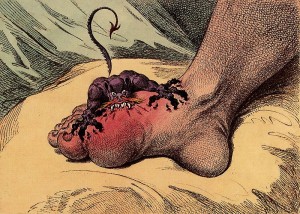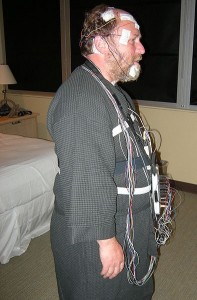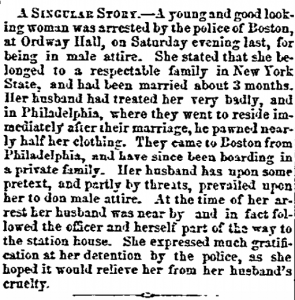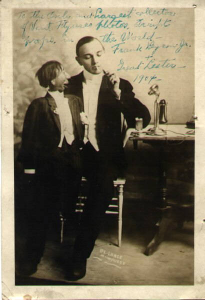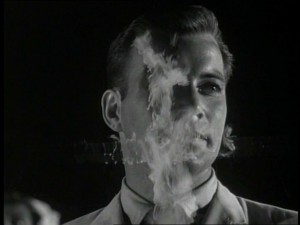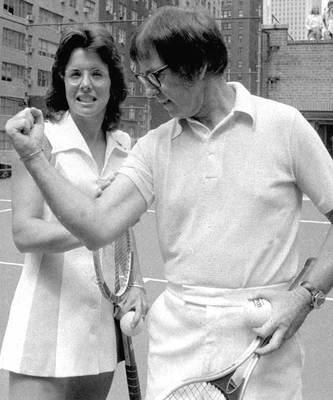Mmm…
You are currently browsing the yearly archive for 2011.
“The sun is zooming in / Engines stop running / And the wheat is growing thin.”

"Dr. W.H. Shoemaker, a talented and leading physician of this city, has been declared insane owing to have become a vicitm to the cocaine habit."
Cocaine, for a brief time, was a popular 19th-century anesthetic and treatment for minor illnesses, before people realized it was highly addictive. Physicians who had easy access to the drug often became hooked on it, as the following stories from the Brooklyn Daily Eagle demonstrate.
••••••••••
“He Operated on Himself” (May 15, 1889): “Birmingham, Ala.–Dr. W.H. Shoemaker, a talented and leading physician of this city, has been declared insane owing to have become a victim to the cocaine habit. While under the influence of the drug he in December last performed upon himself probably the most unique and most remarkable surgical operation ever recorded. He had been a sufferer for some time from a tumor on his liver. One night while he was alone he took his surgical instruments and deliberately cut into the abdominal cavity, cut the tumor from his liver, sewed the incision up, showed the tumor next morning to his brother physicians and has since entirely recovered. His use of cocaine previous to the operation became habitual.”
••••••••••
“He Gave Cocaine Recklessly” (February 25, 1893): “Jackson, Mich.–A local physician, himself a confirmed taker of cocaine, has brought many of his patients under its influence. Reputable medical men have determined that the practice must stop and that the practitioner himself be put under treatment or be debarred from practice. Some of the best class of citizens are addicted to the habit, and the local press publishes a list of hundreds. The majority of the victims became addicted to cocaine before knowing what they were taking, it having been administered for throat troubles, hay fever and many minor ills.”
••••••••••
“Started a Fire in His Room” (December 17, 1896): “Crazed by the use of morphine, cocaine and whisky, Dr, Floyd Lamott Danforth, a dentist, with offices at East One Hundred and Twenty-fifth Street, New York, piled his effects in the center of the floor of his apartments early this morning and set fire to them. He then went out and told the police. The fire was extinguished before any material damage was done and the unfortunate man was taken to the East One Hundred and Twenty-fifth street station and locked up.”
••••••••••
“Cocaine Made Him Crazy” (January 6, 1894): “Greenport, L.I.–The monotony of life in Greenport during the season was broken last night and the whole town was thrown into a fever of excitement by the antics of a crazy physician armed with an axe. The unfortunate is Dr. Manaton, who, associated with Dr. Wilson, has been practicing in Greenport since his removal from Brooklyn last summer.
Dr. Manaton is addicted to the use of cocaine. Last night he took an overdose of the drug and became violently insane. He had just retired to his room and was but partially dressed when the attack came upon him. His sister and the servant had retired and they were aroused by a tremendous racket in the doctor’s apartment. They realized that the windows were being shattered and the furniture being smashed and suspected the cause. The women locked themselves in the room and the work of destruction went on. They heard the doctor go down stairs and out into the yard. When he returned Miss Manaton peeped out of the door and saw that her brother had armed himself with an axe and with it he commenced to chop away the stair railing. The frenzied man caught sight of his sister through the partly open door and made a rush for her with the uplifted axe. She closed and locked the door and before he succeeded in breaking it in with the axe the two women escaped through a door into an adjoining room and made their way out of the house clad only in their night clothes.”
Marshall McLuhan was born on July 21, 1911, and to celebrate his century mark I present the following excerpt from Jane Howard’s 1966 Life magazine article, “Oracle of the Electric Age“:
No people in the history of humanity, McLuhan insists, ever faced demands as grueling as those that confront us. We are witnessing simultaneously the end of what he calls the Mechanical, or Gutenberg, Era, dominated by movable type and later mechanical forms, and the birth pangs of the new and entirely different Electric Age, which he sometimes calls the Age of Circuitry, or of Information. As his books The Gutenberg Galaxy and Understanding Media explain, the change is the most traumatic since the transition 9,000 years ago, from the paleolithic culture to the neolithic, from hunting to agriculture.
The change, says McLuhan, is making movable type obsolete and with it books, newspapers, magazines–in fact all kinds of printed matter, including the sentence you are now reading. We will also have to junk the by-products of the Gutenberg invention which, says, McLuhan, have created our culture’s visual, literary, detached, linear approach to life. This dooms a lot more linear by-products than you might think, including railways, clotheslines, stocking seams, the grid system in city planning and stag lines at dances. Even points of view must go–“because it’s no longer possible to take a fixed position for more than a single moment.” So must jobs, which are fragmentary in nature and do not suit the new age in which people crave roles with depth involvement.•
Tags: Jane Howard, Marshall McLuhan
No one gets murdered, shockingly. (Thanks Reddit.)
On Boing Boing, neurobiologist David J. Linden pushes back on futurist Ray Kurzweil’s vision of nanobots being introduced into our brains in the near term, making it possible for us to communicate with external hardware and extend our memory and intellect almost infinitely. An excerpt:
“Don’t get me wrong. I do believe that the fundamental and long-standing mysteries of the brain will ultimately be solved. I don’t hold with those pessimists who claim that we can never understand our minds by using our brains. I also share Kurzweil’s belief that technological advancement will be central to unlocking the enduring mysteries of brain function. But while I see an exponential trajectory in the amount of neurobiological data collected to date, the ploddingly linear increase in our understanding of neural function means that an idea like mind-uploading to machines being usefully deployed by the 2020s or even the 2030s seems overly optimistic.” (Thanks Browser.)
Kurzweil’s take:
“Still not within the nervous system, you got 20 years, 25 years, these nanobots, these blood cell size devices will be going in our bodies keeping us healthy from inside. We’ll have some go inside our brains to the capillaries not invasively, there would be interacting with our biological neurons so it’ll extends our memory, our decision making faculties, put our brains on the internet and they also enable us to enter virtual reality environment from within the nervous system.
So, for on to go in the virtual reality environment, the nanobots will shut down the signals coming from I realize in my real skin and create the signals that will be appropriate for the virtual environment and that will feel like I’m in that environment and I’ll have a virtual body and those environment could be the same body I have in real reality, it could be a different body, a couple could become each other, experience relationship from the others perspective, teacher could design a student to become Ben Franklin in the virtual constitutional congress not just dress up as him but become that character and this virtual environments would be like websites, you’ll have millions to choose from and some will be recreations are beautiful earthly environments like the Taj Mahal or the Mediterranean Beach.”
Tags: David J. Linden, Ray Kurzweil
I want the car that goes 400 mph
My room mate says there is a car that can go over 400 mph and faster. That is crazy because the New York State speed limit is at most 60mph. My roomy says this super car can within most trauma from collisons. Is such a car real? If so. I want one. The girlks I could get with this….
Refuses to leave.
This amazing classic photograph, taken in 1906 by G.K. Gilbert, shows the Point Reyes Station in Marin County, in the wake of the San Francisco earthquake. (Click on the photo to see a much larger version.) Because of the girl in the skirt staring into the heavens and the presence of the dog, it gives off a Wizard of Oz vibe. An excerpt from a 2008 San Francisco Chronicle article about the death of Irma Mae Weule, likely the final survivor of the 1906 quake:
“Mrs. Weule had vivid memories of growing up in the horse-and-buggy era and clearly recalled the 1906 earthquake, which she experienced as a child. She was one of 11 earthquake survivors who attended a centennial commemoration in 2006 and was interviewed on national television.
She was living at the time of the earthquake with her parents in a portion of the Bayview district called Butchertown, an area so far out that the family kept a cow in the backyard.
Her father, Louis Nonnenmann, ran a wholesale meatpacking business. The family home was large enough to have a social hall in the basement, and Mrs. Weule remembered that her father took in whole families of earthquake refugees.”
Tags: G.K. Gilbert, Irma Mae Weule
Yikes. It’s like she was drowned and came back to life to avenge her death. (Thanks Reddit.)
In 1979, John Z. DeLorean was poised for greatness or disaster, having left behind the big automakers to create his own car from scratch, a gigantic gambit that required huge talent and hubris. Esquire writer William Flanagan profiled DeLorean that year, capturing the gambler in mid-deal, still bluffing, soon to be folding. The opening:
“For a man who looks like Tyrone Power, is married to the stunning young model in the Virginia Slims and Clairol ads, and earns six figures a year, John Zachary DeLorean certainly doesn’t smile much. He can’t. Not just yet, anyway. The reason is simple: The most important project in his life has yet to be accomplished. DeLorean wants to make a monkey out of General Motors. He is on the verge of doing it, but he has a way to go.
There will be no rest for DeLorean until he finishes doing what no one else in the history of modern business has dared attempt–to design, build, and sell his very own automobile from scratch, an automobile the world’s largest car company wouldn’t, couldn’t, and probably shouldn’t build.
By mid-1980, either DeLorean will be smiling at last or he’ll be a shattered man. At stake are thousands of jobs for unemployed Catholics in Belfast; the wisdom and reputation of the British government, which, amid howls of protest, has bet about $106 million on the flamboyant engineer; and about another $40 million posted by several hundred U.S. car dealers and other investors, ranging from Merrill Lynch stockbrokers to Johnny Carson.
But most important, John DeLorean’s pride is at stake. If his DMC-12 sports cars roll off the assembly line–and if they sell–he will have been avenged. He will have shown the bastards that they were wrong, goddammit, that General Motors was wrong about him and what you can do with an auto company. He will have shown that you can make a virtually rustproof car with a stainless steel skin and underbody, with air bags, with a reinforced plastic frame–a car that won’t kill you in a sixty-mile-an-hour, head-on crash, a car that can last twenty-five years or more. And he will have shown that you can sell that car, even at about $14,000 a copy. And if the platoons of pinstriped, cordovan-shod executives of GM doubt it, they can go and stick their noses up its tail pipe.”
••••••••••
John DeLorean speaks at the DeLorean Car Show in Cleveland in 2000:
Another John DeLorean post:
Tags: John DeLorean, William Flanagan
From Bell Labs.
old men & young women (A PUBLIC SERVICE ANNOUNCEMENT)
Men:
I think you’re delusional.
Men well in their 50s who want to date 35 year old women. Crazy
I get that they want some young fleshpot, but for a LTR? Totally weird.
What do they think will happen when young miss thing hits her midlife
crisis and wants to dump your wrinkled ass? Where are you then?
Half your assets gone and NO DATE.
You’ll have to have a nice tub of butter to hang onto miss cutiepie then.
Don’t overlook women of a certain age…. I hated sex with my husband,
but now I’ve it going on, now that I’m not listening to the constant wining.
So boys… don’t overlook your peers….
Just sayin’….
The first host-to-host message sent over the nascent Internet occurred in 1969 at UCLA, which has belatedly created a shrine to the place where it all started. An excerpt from a story on the topic by Southern California Public Radio:
“In a small computer lab in a forgotten building at UCLA, Professor Leonard Kleinrock and a group of graduate students sent the very first message over what would become the Internet, back in 1969. Since that milestone, the room was in continuous use as a classroom, and its significance to history was all but forgotten. But now the room has been transformed into a re-creation of the ARPA lab, complete with the original equipment from the ’60s and period furnishings to match.
The Interface Message Processor, or IMP as engineers fondly call it, stands in the same spot in 3420 Boelter Hall today as it did in 1969. It functioned much like a modem, sending messages from the host computer, an SDS Sigma 7, through the network to an IMP in a remote location, which relayed it to another host computer.
During the ’60s, UCLA was chosen as the first node of what was known as ARPANET, a precursor to the Internet funded by the Defense Department’s Advanced Research Project Agency (DARPA). UCLA set up the very first network connection between their IMP and the IMP at Stanford Research Institute in northern California.
On October 29, 1969, Kleinrock and his team undertook a simple task to test the network – sending a login request from their host computer to the host computer at SRI.”
••••••••••
Leonard Kleinrock recalls the birth of the Internet:
Tags: Leonard Kleinrock
Ever-cheerful playwright Tennessee Williams talks to Bill Boggs. Full Q&A here.
Tags: Bill Boggs, Tennessee Williams
From a 1969 Life piece about the interlocutor Oriana Fallaci, who recalls introducing a young Muhammad Ali to her aggressive interviewing style:
“Question:
Has anyone actually threatened to break your nose off for something you wrote?
Oriana Fallaci:
Something like it happened with Cassius Clay. I had seen him a couple of times, and I went back to his house in Miami to finish the interview. He was eating a melon. I said, Good Morning, Mr. Clay. He keeps on eating the melon and suddenly belches very loud. I think he is just being impolite and I sit down with my tape recorder. And then oooaaagh. He belches again. A big one. Well, I said, let’s go on anyway. And just at that moment, buurp, buurp, whoops, whoops. I turned to him and shouted, I am not going to stay with an animal like you. And I was undoing my recorder, when he took the microphone and threw it against the wall. My microphone! I saw it flying past my head and I took my fists and bam, bam. Went against him. He stood there. So enormous. So tall. And he watched me in a way an elephant watches a mosquito. Black Muslims suddenly came out of all the doors into the room. Evil. Evil. They began to chant. You came for evil. It was like a nightmare. I backed out to my cab, trying to keep my dignity, but really afraid, and went straight to the airport. After the interview was published, Cassius Clay said he was going to break my nose if he ever saw me again. I said, we’ll see, if he breaks my nose, he is going to jail and we will have beautiful news in the papers. I saw him later in New York. I passed with my nose in the air, and he went by without looking at me.”
Tags: Cassius Clay, Muhammad Ali, Oriana Fallaci
There was perhaps no bigger reprobate in 1880s New York than the ventriloquist, as the following reports published in the Brooklyn Daily Eagle demonstrate.
••••••••••
“A Gallant Ventriloquist” (July 20, 1886): “Charles Young, a ventriloquist, who earns a living by exhibiting his acquirement at the West End, Coney Island, was arraigned before Justice Newtown there yesterday afternoon, on complaint of John Dunn, a cottager on the Island, who accused him of assault. Dunn told the Justice that Young had been out walking with his wife and when they returned home Dunn told Young that he should not be so free with another man’s wife. The gallant ventriloquist thereupon assaulted the remonstrating husband, who had him arrested. Young denied the charge and said he had a thousand young ladies to go out with, without taking another man’s wife. He was placed in $200 bonds to answer.”
••••••••••

"A large crowd of people were attracted to the cemetery and they all concluded it was a ghost." (Image by Sukanto Debnath.)
“It Was Not a Ghost” (September 23, 1887): “Frederick Schmidt, of Middle Village, is an accomplished ventriloquist. On Tuesday night, about midnight, he secreted himself in the Lutheran Cemetery, on the outskirts of the village, and began to shriek ‘Murder! Murder! Oh, spare my life!’ at the top of a lofty falsetto voice. Justice Louis P. Knickmann and a large crowd of people were attracted to the cemetery and they all concluded it was a ghost. The justice chased the voice, but could not locate the specter and his hair stood on end along with the hair on the head of everybody present. Finally the voice seemed to hover over the crowd and then the justice and the crowd broke for Middle Village on a dead run. The justice cleared a fence six feet high surrounding the cemetery and was not aware of the fact until reminded of it two hours afterward by one who had observed the feat with astonishment. The justice is a large man. Mr. Schmidt has been smiling ever since.”
••••••••••
“Harry Kennedy Assaulted” (August 18, 1886): “Harry Kennedy, the ventriloquist and saloon keeper, met a few friends in a saloon at the Willink entrance to Prospect Park last night. He became involved in a dispute with a stranger and they clinched. Kennedy was thrown on his back, and the stranger kicked him about the face and body. His friends could not interfere, as they were under the influence of liquor. The strange man escaped from the room, and as no one knows him he will probably never be captured. Kennedy was taken in a carriage to his Coney Island saloon and is confined to his bed. His face is cut in several places and his body is covered in bruises.”
Video short about the Venus Project.
Another Jacque Fresco post:
Tags: Jaques Fresco

"Dalio appeared to compare Bridgewater to a pack of hyenas feeding on a young wildebeest."(Image by JerryFriedman.)
From John Cassidy’s New Yorker article about the odd inner workings of Bridgewater Associates, the world’s largest hedge fund, and its kingpin Ray Dalio:
“Dalio’s philosophy has created a workplace that some call creepy. Last year, Dealbreaker, a Wall Street Web site, picked up a copy of the Principles and made fun of a section in which Dalio appeared to compare Bridgewater to a pack of hyenas feeding on a young wildebeest. In March, AR, a magazine that covers hedge funds, quoted a former colleague of Dalio’s saying, ‘Bridgewater is a cult. It’s isolated, it has a charismatic leader and it has its own dogma.’ The authors of the article noted that Dalio’s ’emphasis on tearing down an individual’s ego hints at the so-called struggle groups of Maoism,’ while his search for “human perfection devoid of emotion resembles the fantasy world in Ayn Rand’s The Fountainhead.’
Dalio doesn’t pretend that Bridgewater is a typical workplace, but he is sensitive to criticism. The recent media attention irked him, because, in his view, it misrepresented and trivialized Bridgewater’s culture, which he insists is central to the firm’s success. ‘It is why we made money for our clients during the financial crisis when most others went over the cliff,’ he wrote to me in an e-mail. ‘Our greatest power is that we know that we don’t know and we are open to being wrong and learning.'”
Tags: John Cassidy, Ray Dalio
Kristen Stewart Autograph (With Certificate of Authenticity) (Inwood / Wash Hts)
BEST OFFER!
Kristen Stewart Autograph (With Certificate of Authenticity)
given to me by my ex, i hate the twilight movies so this is pretty much useless to me :p
not a fan of her either.
in an argument picture frame got broken so no frame.
Tags: Kristen Stewart
It was on the brink for a long time. (Thanks Dangerous Minds.)
It’s difficult to fathom what would have become of the career of schlockmeister Roger Corman if The Intruder, his incendiary 1962 melodrama about race baiting during the tense moments of the Civil Rights Movement, hadn’t been such an unreleasable flop. Rather than failing because of incompetence, the movie never made its mark because it was too searing a statement about too raw a subject, its dialogue too frank to easily take.
Adam Cramer (William Shatner) describes himself as a social worker, but he’s really an antisocial one. The Elmer Gantry of racial divisiveness, the white-suited Cramer storms into a small Southern town on the eve of court-ordered school integration and quickly puts his oratory skills to work. The locals spit more racial epithets than they do tobacco juice, but they’ve become resigned to the change in the air even if they don’t like it. But Cramer senses that there’s rabble to be roused, and his passionate pleas soon have the townsfolk in a lather.
Even the most liberal person in the community, the newspaper editor Tom McDaniel (Frank Maxwell), was against the forced integration, but after a black church is burned to the ground, he has a change of heart. But the interloper quickly has the scribe outnumbered and McDaniel and the black students reporting for class at white schools may be in grave danger.
Despite some writerly plot twists, Corman’s feel for the material and Shatner’s scary intensity make this picture one of the finer B-movies you’ll ever see. But it was a one-and-done reach for greatness by the director. When The Intruder proved too tough a sell, Corman resigned to be satisfied as an entertainer who buried anything meaningful very deep in the subtext. The material he worked with was never so rich again, and his sharp eye for composition on display here grew fuzzier as the screenplays grew worse. Of course, if he hadn’t turned to profitable dreck, Corman likely wouldn’t have been in a position to have midwifed filmmaking careers for Scorsese, Coppola and Bogdanovich, among others. But no matter what is and what might have been, The Intruder remains a testament to Corman’s early abilities.• (The Intruder just became available for streaming on Netflix.)
••••••••••
Recent Film Posts:
- Strange, Small & Forgotten Films: They Came Back (2004)
- Classic Film: The Rapture (1991)
- Recent Film: Somewhere
- Recent Film: Another Year
- Classic Film: The Truman Show (1996)
- Classic Film: Salesman (1968)
- Classic Film: Night of the Living Dead (1968)
- Classic Film: The Conversation (1974)
- Classic Film: King of Comedy (1982)
- Recent Film: Dogtooth
- Classic Film: RoboCop (1987)
- Recent Film: Marwencol (2010)
- Classic Film: Being There (1979)
- Classic Film: Woman in the Dunes (1964)
- Classic Film: The Man in the White Suit (1951)
Tags: Frank Maxwell, Roger Corman, William Shatner
Bobby Riggs, that huckster, profiled by Mike Wallace in 1973 for 60 Minutes prior to facing Billie Jean King in the Battle of the Sexes.
King and Riggs shill together for Sunbeam’s Mist-Stick Curler Dryer:
Tags: Bille Jean King, Bobby Riggs, Mike Wallace

